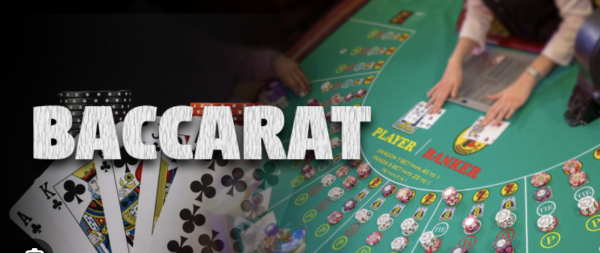The Three Main Bets in Baccarat and How They Work
The history of baccarat is quite old, maybe dating back to Italy. The name is derived from the Italian word "baccara," which means zero, a reference to the fact that 10s and face cards count as zero in the game. The basic concept of a simple card game in which face cards and tens don't count has persisted for centuries, even though the original version was most likely very different.
Baccarat originated in Italy and made its way to France, where it gained particular popularity. Baccarat eventually reached Asia and the US, where its popularity skyrocketed. We are presently discussing it.
What is Baccarat in General
At its core, baccarat is a game about betting on who will have the better hand: the player, the banker, or if it will be a tie. Unlike blackjack, you’re not making decisions during the hand — once the bets are placed, the cards are dealt, and the outcome is basically automatic. That’s why baccarat is often seen as more of a pure luck game, with less strategy involved compared to blackjack.
The hands themselves are scored differently, too. Instead of trying to get as close to 21 as possible, baccarat hands are scored modulo 10. This means you add up the card values, but only the last digit counts. For example, if you have a 7 and an 8, that’s 15, but the hand value is 5 (the last digit). Cards 2 through 9 are worth their face value, 10s and face cards count as zero, and Aces count as 1. The best possible hand is a 9, called a “natural,” which usually wins outright unless both hands tie with a 9.
The dealer deals two hands — one called the Player and the other the Banker, but those names don’t mean you’re playing for either side. You just bet on which hand you think will win or if they will tie. After the initial two cards, depending on the totals, a third card might be drawn based on fixed rules (no decisions from players here). It can sound complicated at first, but the dealing rules are automatic and don’t require you to memorize much.
What really draws people to baccarat is the low house edge on the Banker bet (around 1.06%) and the Player bet (around 1.24%), which makes it one of the fairest games in the casino. The tie bet, however, carries a much higher house edge, so it’s usually best avoided.
Since you know some rules already you may want to try but it is so risky to play for real money at first so you can try a baccarat online simulator.
The Three Main Bets In Baccarat
There are three main bets in Baccarat - the Player bet, the Banker bet, and the Tie bet.
The first one is the player bet. This wager is on the player's hand winning. That is only the name of one of the two given hands; it does not imply that you are the "player." You win this wager if the player's hand comes closer to nine than the banker's. If you wager $10, you will earn $10 since winning player bets pay even money (1:1).
Although not nearly as advantageous as the Banker bet, this wager's house margin of about 1.24% is still relatively small when compared to other casino games.
The next is the banker bet. The Banker's hand is predicted to win this wager. Once more, "Banker" is only the name of the used car and does not refer to the residence. The majority of astute players tend to favor the Banker hand since it has a slightly greater statistical chance of winning.
However, casinos often pay a 5% commission on Banker winnings since it win more frequently. Therefore, you will receive $9.50 in profit if you wager $10 on Banker and win. With the lowest house edge of the three, at around 1.06%, it remains the best baccarat wager despite the charge.
This wager assumes that the Player and Banker hands will finish with the same total, or that they will tie. Because a successful Tie bet pays 8:1 or 9:1, depending on the casino, it seems alluring. Thus, you may win $80 or $90 with a $10 wager.
The drawback is that the house edge is enormous, sometimes exceeding 14%, and ties are uncommon. Most seasoned players don't rely on this high-risk, high-reward wager, but it's entertaining to periodically place.
Conclusion
There are still methods to play and raise your odds over time, even though baccarat is mostly a game of chance with set rules and no player choices made during the hand. Consistently betting on the Banker hand is the greatest and most straightforward approach since, even after the 5% commission, it has the lowest house edge at about 1.06% and, statistically, wins somewhat more frequently than the Player hand. Additionally, it's wise to stay away from the Tie bet. Although its large payoff may make it seem attractive, the house edge is substantial and the probabilities of it happening are low, making it a bad long-term proposition. Many players enjoy following patterns or streaks, however since each hand is unique and unpredictable, following trends doesn't really increase your odds.
|
|















